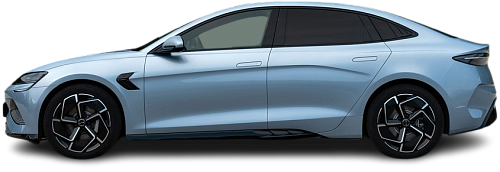Global EV Comparison: Xiaomi SU7 Base vs BYD Seal Design RWD
Struggling to Decide? Let AI Help!
Your AI Summary Is Ready!
General Info
Both vehicles are currently in production and can be purchased new. The Xiaomi SU7 (2024-...) has a starting price of €27832, compared to the BYD Seal Design RWD (2022-…), which starts at €44990.
The two vehicles share the same body style: Sedan.
| Property | Xiaomi SU7 Base | BYD Seal Design RWD |
|---|---|---|
| Years of Production | 2024-… | 2022-… |
| Current Status | Produced | Produced |
| Country of Manufacture | China | China |
| Body Style | Sedan | Sedan |
| Market Availability | EU | EU |
| Price Europe (New) | €27832 | €44990 |
| Price Europe (Used) | - Price Europe (Used) | €38440 |
| GCC Score | 6.9 | 6.5 |
Range and Efficiency
While the BYD Seal Design RWD (2022-…) offers a longer real-world range and a bigger battery, it is less energy-efficient than the Xiaomi SU7 (2024-...).
| Property | Xiaomi SU7 Base | BYD Seal Design RWD |
|---|---|---|
| Range (WLTP) | 560 km | 570 km |
| Range (GCC) | 476 km | 485 km |
| Battery Capacity (Nominal) | 76.8 kWh | 84 kWh |
| Battery Capacity (Usable) | 73.6 kWh | 82.5 kWh |
| Efficiency per 100 km | 15.5 kWh/100 km | 17 kWh/100 km |
| Efficiency per kWh | 6.47 km/kWh | 5.88 km/kWh |
| Range and Efficiency Score | 8.5 | 8.2 |
Charging
Both vehicles utilize a standard 400-volt architecture.
The Xiaomi SU7 (2024-...) offers faster charging speeds at DC stations, reaching up to 170 kW, while the BYD Seal Design RWD (2022-…) maxes out at 150 kW.
Both vehicles are equipped with the same on-board charger, supporting a maximum AC charging power of 11 kW.
| Property | Xiaomi SU7 Base | BYD Seal Design RWD |
|---|---|---|
| Max Charging Power (AC) | 11 kW | 11 kW |
| Max Charging Power (DC) | 170 kW | 150 kW |
| Architecture | 400 V | 400 V |
| Charge Port | CCS Type 2 | CCS Type 2 |
| Charging Score | 6.5 | 6.5 |
Performance
Both vehicles are rear-wheel drive.
Although the BYD Seal Design RWD (2022-…) has more power, the Xiaomi SU7 (2024-...) achieves a faster 0-100 km/h time.
| Property | Xiaomi SU7 Base | BYD Seal Design RWD |
|---|---|---|
| Drive Type | RWD | RWD |
| Motor Type | PMSM | PMSM |
| Motor Power (kW) | 220 kW | 230 kW |
| Motor Power (hp) | 295 hp | 308 hp |
| Motor Torque | 400 Nm | 360 Nm |
| 0-100 km/h | 5.3 s | 5.9 s |
| Top Speed | 210 km/h | 180 km/h |
| Performance Score | 5 | 4.5 |
Dimensions
The Xiaomi SU7 (2024-...) is longer and wider, but about the same height as the BYD Seal Design RWD (2022-…).
The Xiaomi SU7 (2024-...) boasts a more extended wheelbase.
| Property | Xiaomi SU7 Base | BYD Seal Design RWD |
|---|---|---|
| Length | 4997 mm | 4800 mm |
| Width (with Mirrors) | - Width (with Mirrors) | 2150 mm |
| Width (w/o Mirrors) | 1963 mm | 1875 mm |
| Height | 1455 mm | 1460 mm |
| Wheelbase | 3000 mm | 2920 mm |
Cargo and Towing
Both models feature a convenient frunk (front trunk), providing additional storage space.
The BYD Seal Design RWD (2022-…) has a towing capacity of up to 750 kg, whereas the Xiaomi SU7 (2024-...) is not officially rated for towing in the EU.
| Property | Xiaomi SU7 Base | BYD Seal Design RWD |
|---|---|---|
| Number of Seats | 5 | 5 |
| Curb Weight | 1980 kg | 2055 kg |
| Cargo Volume (Trunk) | 517 l | 400 l |
| Cargo Volume (Frunk) | 105 l | 53 l |
| Towing Capacity | - Towing Capacity | 750 kg |
| Cargo and Towing Score | 5.3 | 5.3 |




